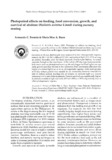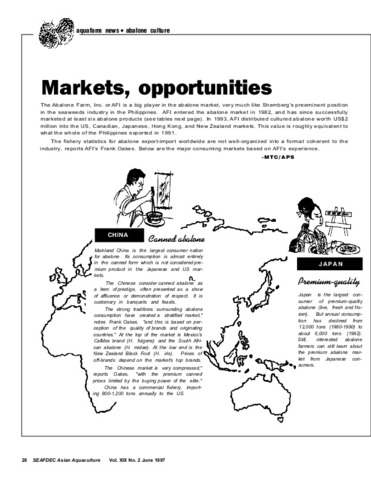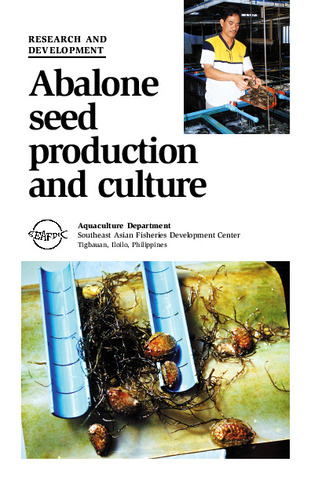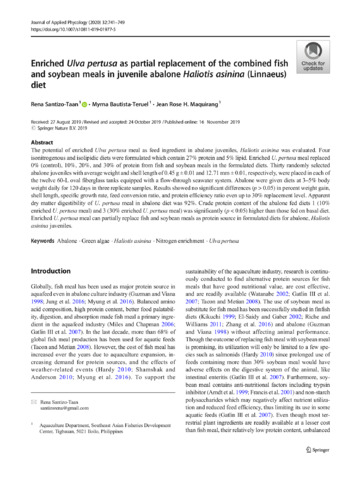Photoperiod effects on feeding, food conversion, growth, and survival of abalone (Haliotis asinina Linne) during nursery rearing
- Global styles
- MLA
- Vancouver
- Elsevier - Harvard
- APA
- Help
Share
抄録
Juveniles of Haliotis asinina, 10 mm shell length were subjected to four photoperiodic regimes namely, 6L:18D, OL:24D, diffused 12:12D, and ambient light (12L:12D) serving as control. Juveniles were fed fresh seaweed, Gracilariopsis bailinae, in excess amounts throughout the experiment. At the end of a 105-day experiment, juveniles held under ambient photoperiod were significantly bigger and had higher average daily growth rate than the rest of the treatments. Feed conversion efficiency was higher at ambient light than at other photoperiodic regimes. Daily feeding rates at 65-day culture period were similar for all treatments; however towards the end of culture period, feeding rate of abalone at ambient light was lowest compared to the rest of the treatments. Percent survival was significantly higher in animals at ambient light and at 6L: 18D with 99% and 97% respectively, than at other photoperiodic regimes.
Type
Conference paperCollections
- Conference Proceedings [298]
Related items
Showing items related by title, author, creator and subject.
-
[Abalone] markets, opportunities
Castaños, Milagros T.; Surtida, Augusto P. (Aquaculture Department, Southeast Asian Fisheries Development Center, 1997) -
Abalone seed production and culture
著者不明 (Aquaculture Department, Southeast Asian Fisheries Development Center, 2000)Details the research conducted at AQD for the tropical abalone Haliotis asinina. AQD has developed the rudiments of a hatchery protocol. -
Enriched Ulva pertusa as partial replacement of the combined fish and soybean meals in juvenile abalone Haliotis asinina (Linnaeus) diet
Santizo-Taan, Rena; Bautista-Teruel, Myrna; Maquirang, Jean Rose H. (Springer Verlag, 2020)The potential of enriched Ulva pertusa meal as feed ingredient in abalone juveniles, Haliotis asinina was evaluated. Four isonitrogenous and isolipidic diets were formulated which contain 27% protein and 5% lipid. Enriched ...





